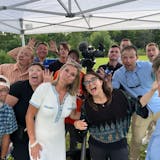Fifty years ago, because of "technical issues" on the previous flight, Apollo 10, there were thoughts of postponing Apollo 11 and humankind's first visit to the lunar surface. Those technical issues focused attention on Minneapolis and the quality of Honeywell's "rate gyros."
Rate gyros are devices that indicate the change of a vehicle's angular orientation over time. For example, if you were driving northbound on a freeway and exited under an overpass to join the crossing freeway, a gyro would indicate your heading changing from 0 degrees (north) to 90 degrees (east) to 180 degrees (south) to 270 degrees (west). If the exit ramp had been built with perfect symmetry and you maintained a constant speed, a rate gyro would show a constant rate of change during the turn.
This type of gyro is very important in stabilizing and controlling a launching rocket. It can detect small drifts caused by aerodynamic or thrust asymmetries, which are then counteracted by adjusting the thrust nozzles. Any change in pitch or yaw of the rocket is quickly sensed and corrected.
Honeywell had begun building rate gyros in the 1950s and soon became a leading supplier, leveraging Minneapolis's superior capability in precision machining to produce the most accurate rate gyro for its size and weight. Honeywell labeled the device the GG440, but the industry knew it as the "Golden Gnat." The one-inch diameter, two-inch long cylinder was electroplated with a gold finish for protection in harsh environments.
A Saturn V rocket used nine rate gyros in its instrumentation unit (achieving triple redundancy on pitch, roll and yaw) and two in each rocket stage, totaling 15 per Apollo launch.
During the Apollo 10 flight, which carried three astronauts around the moon and back, "the crewmen stated that the FDAI indicated excessive drift in the pitch and yaw axes," according to a NASA technical note. Honeywell also had provided the Flight Directive Attitude Indicator (FDAI).
This apparent fault spawned an intense study into its cause. Apollo 11 was scheduled to launch in less than six weeks. Instead of denying that its product was part of the problem, Honeywell opened its factory and redirected its engineering in an effort to accelerate the investigation. Any fault was one too many.
The Minneapolis factory already had designed and implemented one of the highest-quality clean-room assembly areas in the country, knowing that even a speck of dust could lead to inaccuracies. The nine rate gyros that returned to Earth were sent to Honeywell for fault analysis. While the factory was testing and inspecting each of these gyros, a floor full of engineers above the factory worked with NASA analysts to scrutinize the design of the sensors and the entire control system for possible faults.



